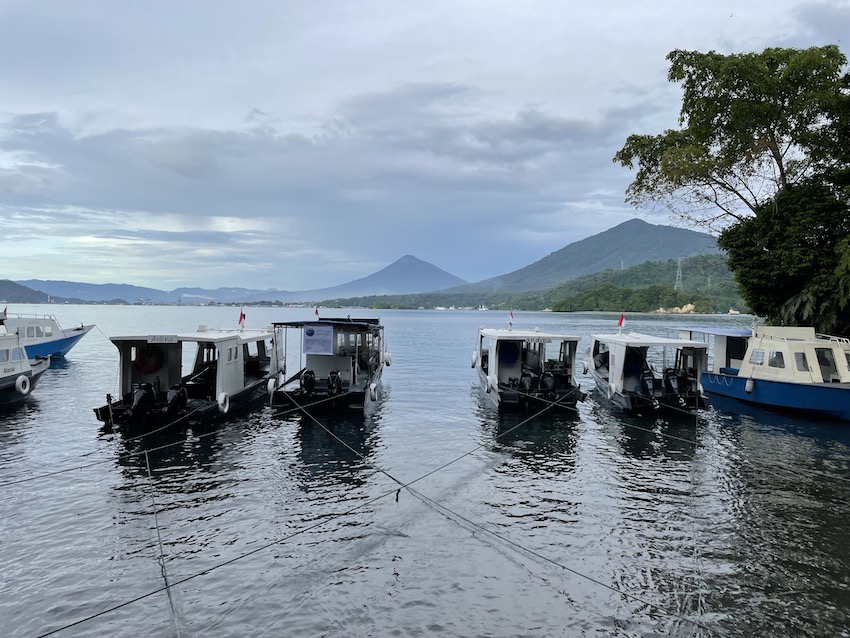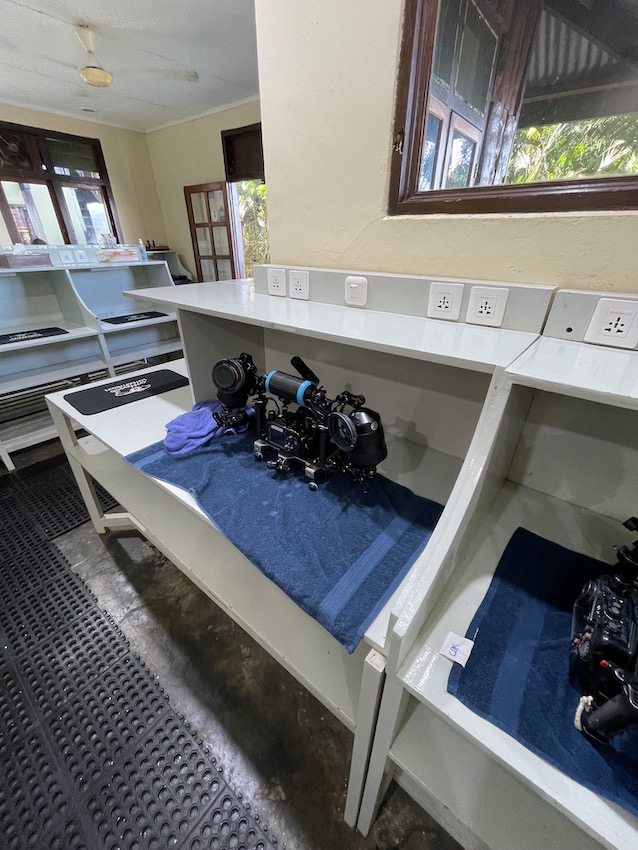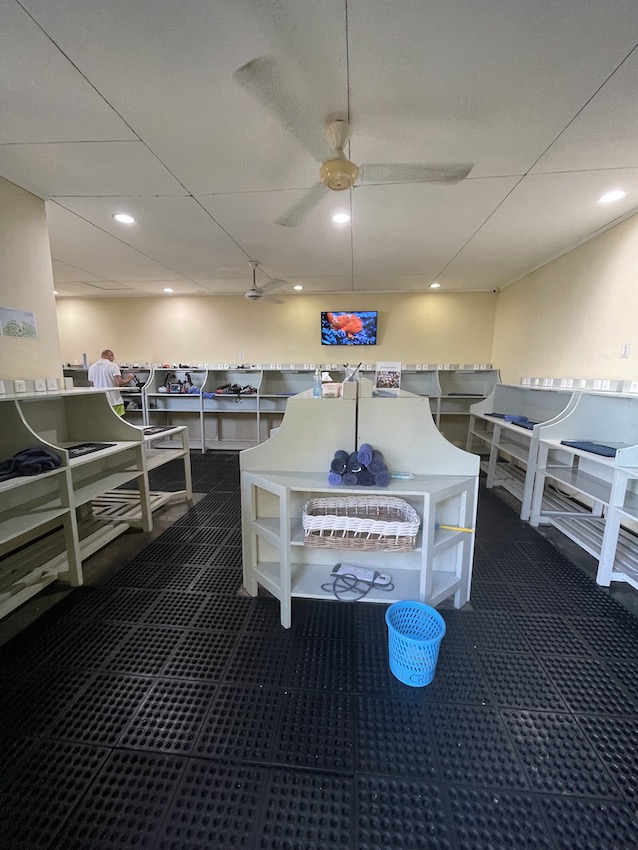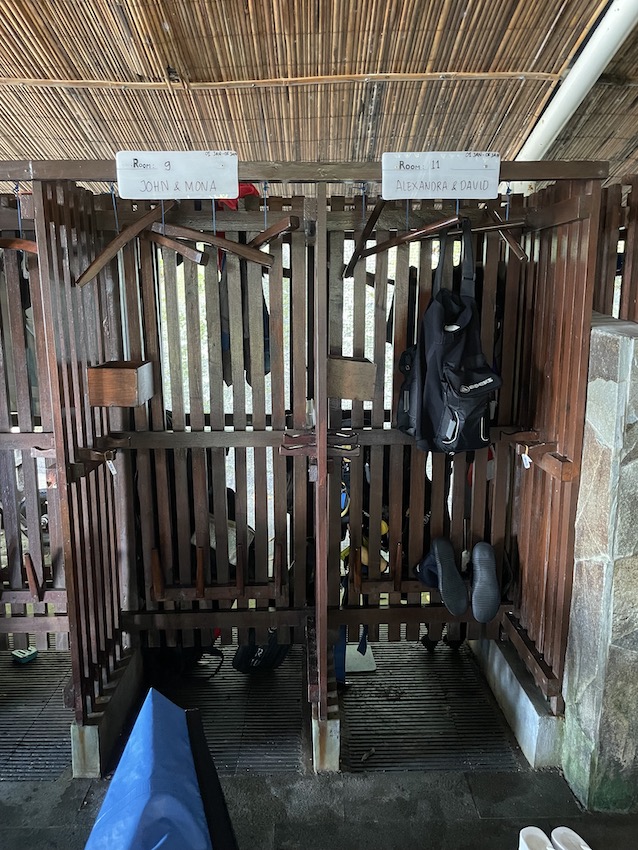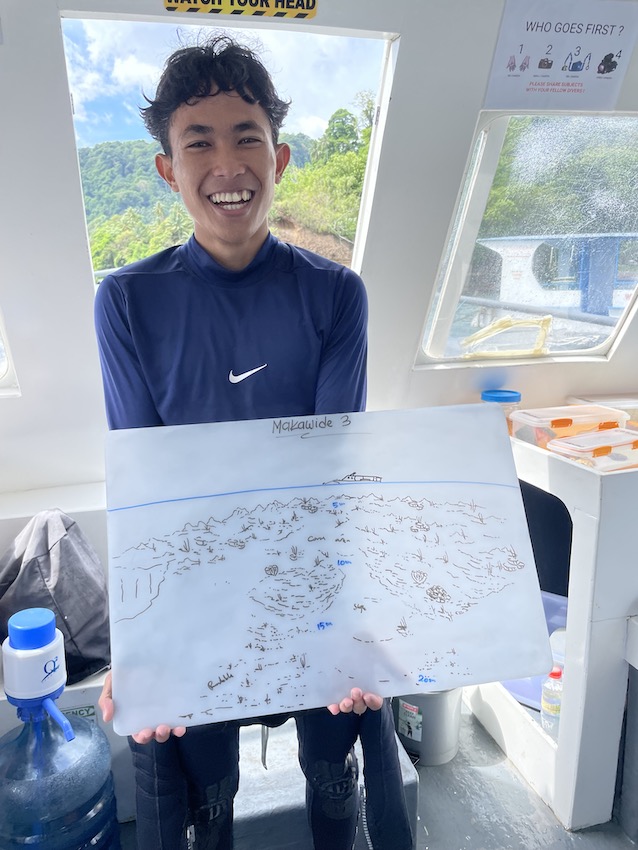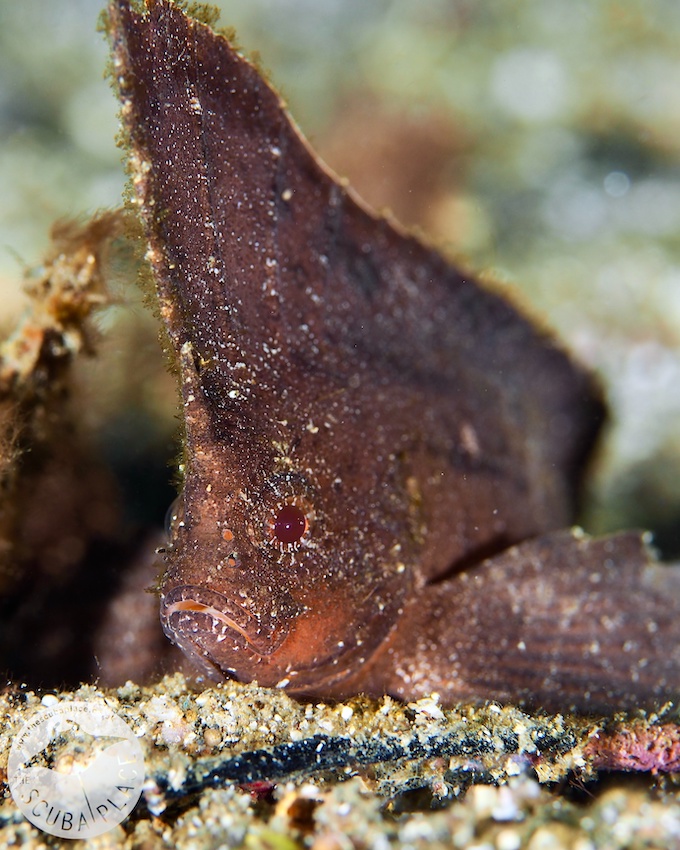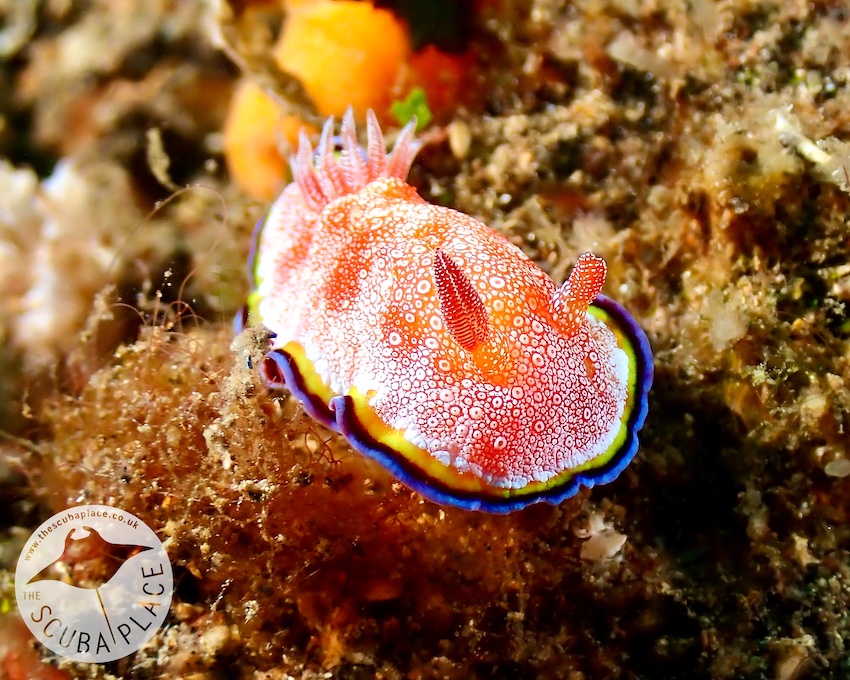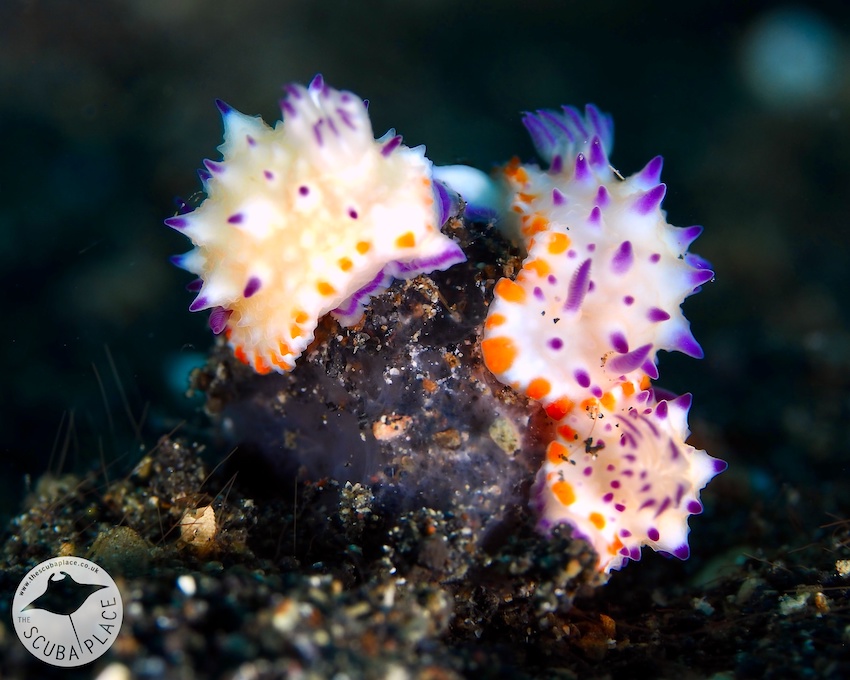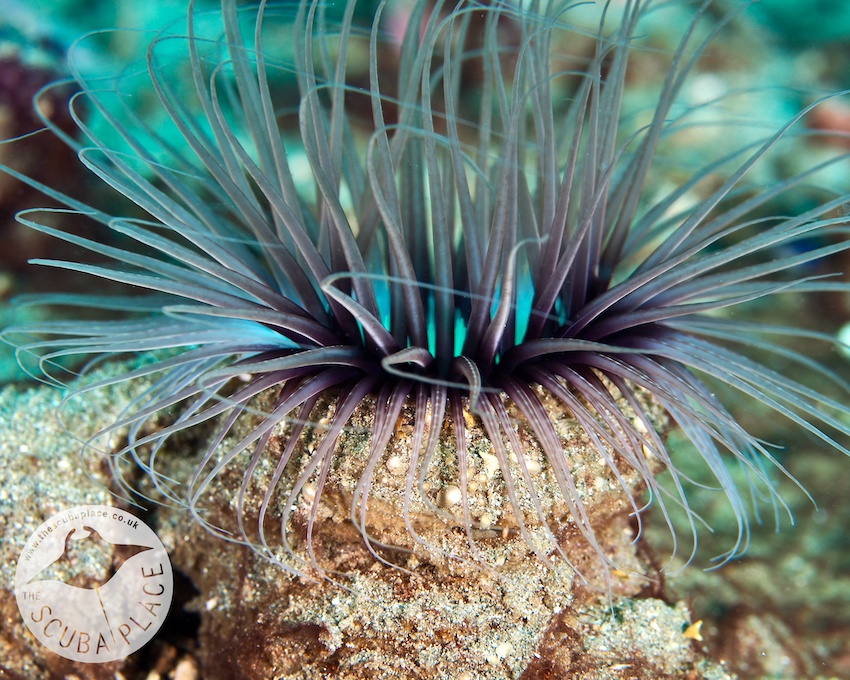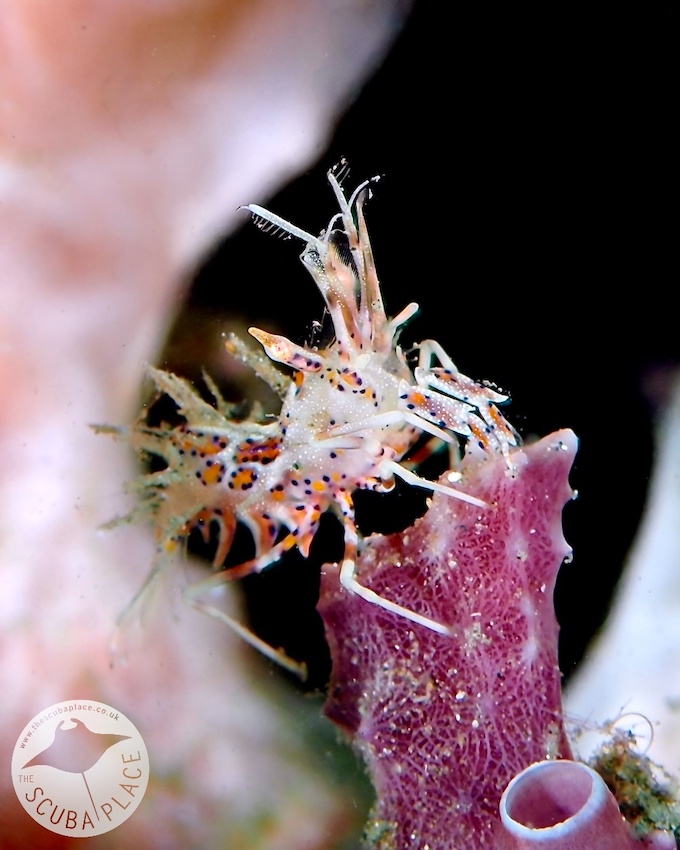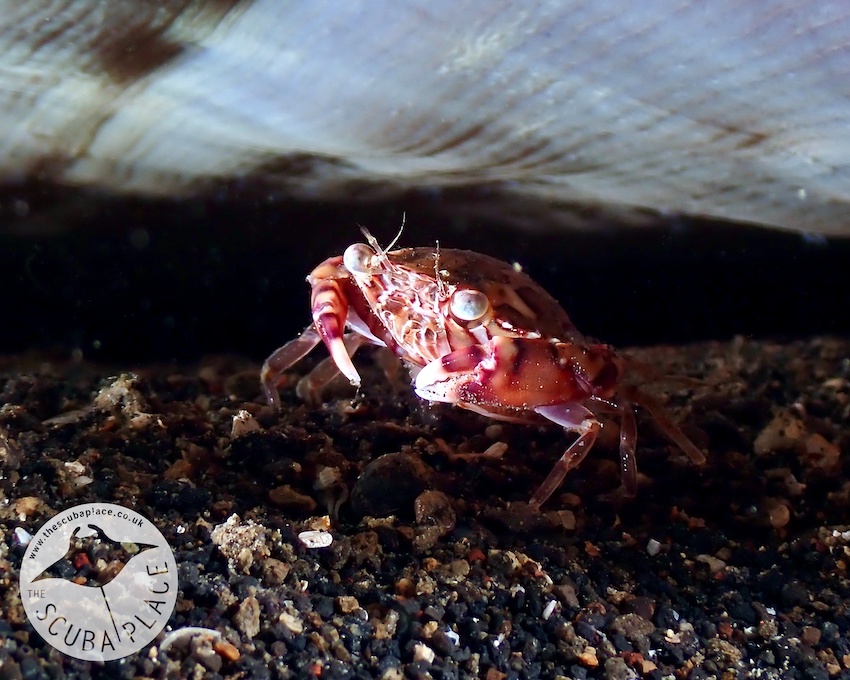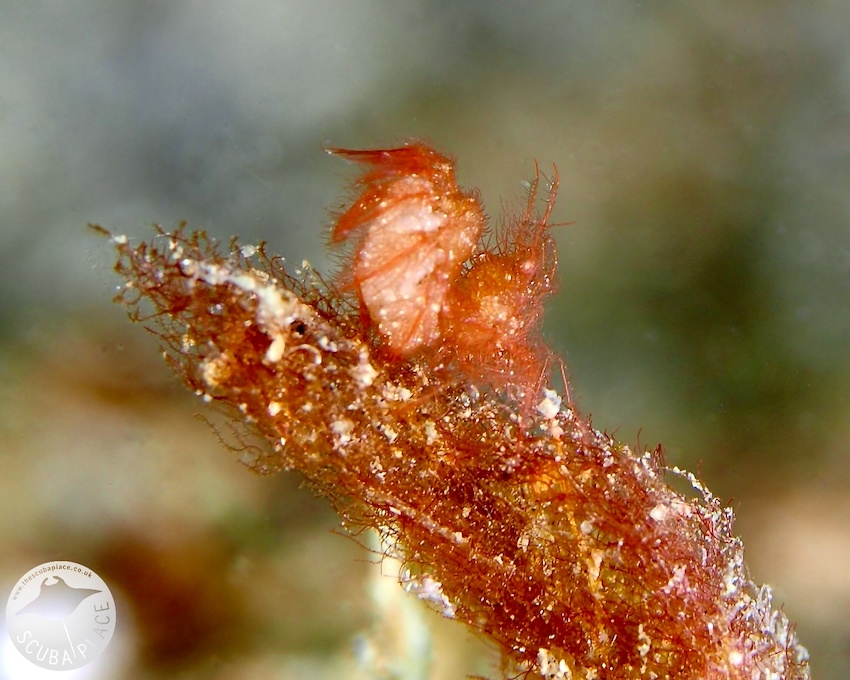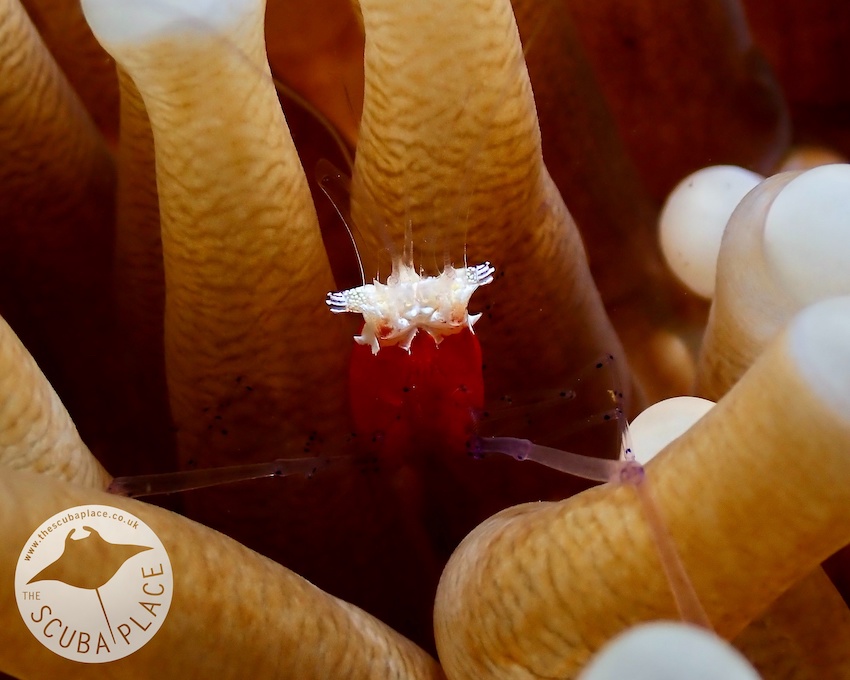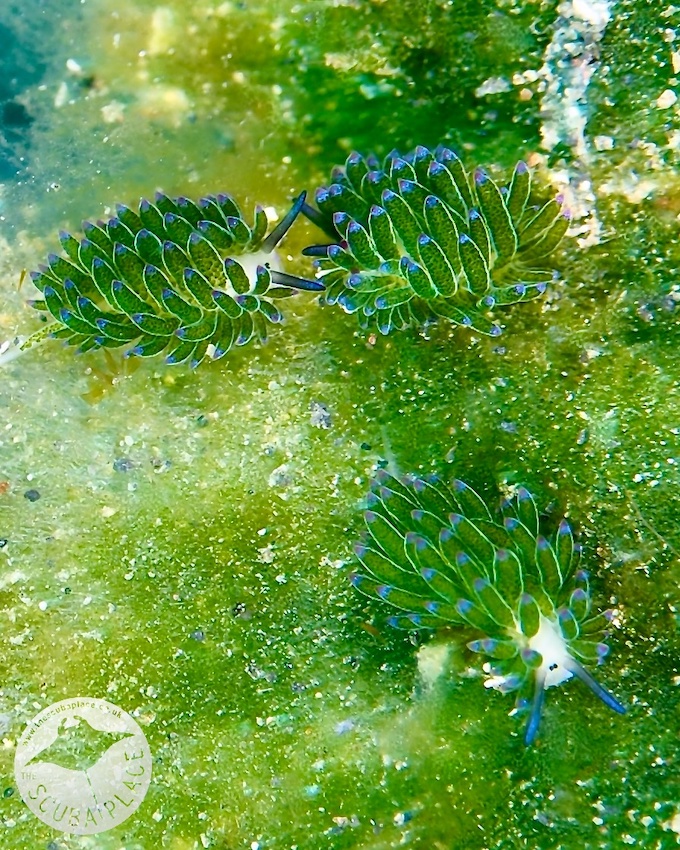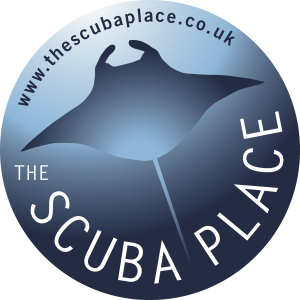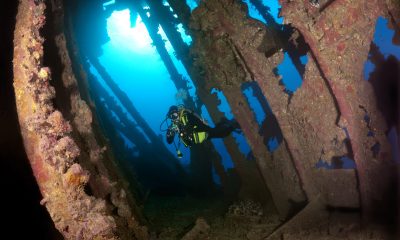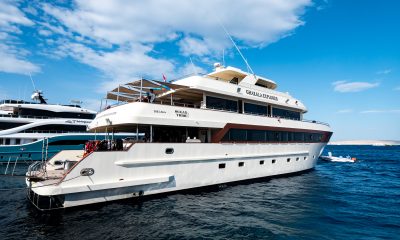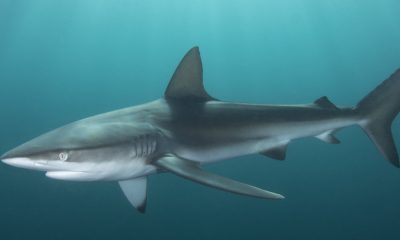Blogs
Dive Indonesia : Lembeh Resort Trip Report
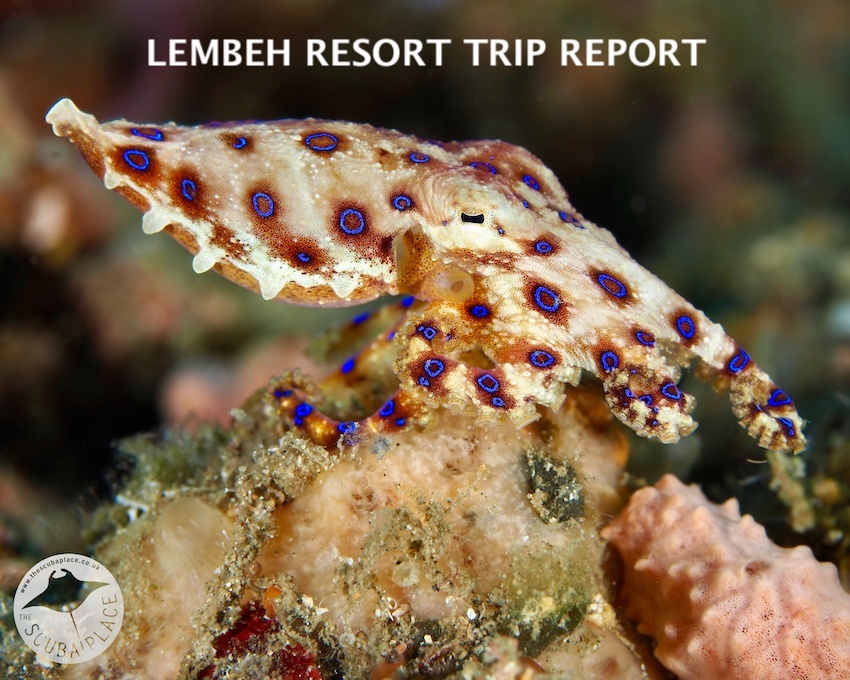
The Scuba Place spent January 2023 exploring four different resorts in Indonesia with a group of divers. This is Part One of their Trip Report on Lembeh Resort.
17,504 islands make up the nation of Indonesia, and it has the second largest coastline of any country – nearly 55,000 kilometres. The highest island peak, the youngest population on the planet, the largest volcanic lake, and over 700 languages and dialects are spoken. There are so many things that make Indonesia unique and special, and we spent the month of January exploring four different areas to see for ourselves some of what it can offer our clients.
Spoiler Alert – we bloody loved it!!
This recce was also one of our infamous Come Dive with Us hosted trips. New Year’s Eve was spent in Jakarta airport after having flown from London via Dubai. We watched the clock on the flight announcement board click over in a very quiet airport before boarding our final flight to Manado, the capital of North Sulawesi in Indonesia.
Slightly jet-lagged and mostly hot and sweaty, we were met at Manado Airport by the staff from Lembeh Resort, and a very nice air-conditioned mini-bus. We set off for a 40-minute drive across the island. The newly opened road makes this a very easy journey. The last leg of the journey was then a 15-minute boat ride on one of the resort’s dive boats, across the harbour and to the resort – a tiny bit of heaven in the beautiful landscape.
What first struck us was how very small the resort appeared – rooms dotted up and down the hillside, a dive centre with camera room – a PROPER camera room – and a central two-story building with reception downstairs, and the open-air restaurant upstairs. Lembeh Resort has a stellar reputation in the diving and underwater photography communities, so I suppose we can be forgiven for not realising how small and select this place is – with only 20 rooms (8 Premium Luxury Cottages, 5 Hillside Luxury Cottages and 6 Garden Rooms), even when fully occupied this is a very quiet and very special place!
Do the maths – 20 rooms (if full) so 40 people. MAXIMUM! With 5 huge dive boats, that’s 8 divers per boat, and with two to four guides per boat, this means very special, ‘privately guided’ diving! Our group had its own boat and 3 guides, sometimes 4, across the 9 of us. Complete with O2, life jackets, spare tanks and dive equipment, toilets, towels, cold water (and hot with tea and coffee on double tank outings) plus fruit and snacks, there isn’t much more than anyone could want from a dive boat. Easy access from the beach steps and dive centre, and the crew are the warmest and friendliest, and truly expert, people ever!
The dive centre area is well set up – a two-person open wardrobe with shelving and hanging for all things wet and dive related, big benches to sit on whilst kitting up, showers and even more towels – and being a mere waddle to the dive boats – this is some of the most civilised diving ever!
Cameras – it isn’t called Critters@Lembeh for nothing, and photography here is equivalent to F1 at Silverstone, Rugby at Twickenham and Cricket at Lords – this is THE place, so you would expect the facilities to be pretty spot-on, wouldn’t you? Expect a fully-fledged and secure camera room, with shelves above and below each camera desk, individual power supplies with adapters, camera towels and non-slip mats. Separate rinse tanks outside, airguns, together with the resident Backscatter Pro offering support, advice, spare parts and courses.
Our rooms were split across the group, with some in the beautiful Hillside Cottages. These really are on a hillside, and there are a good few steps up to them, but the climb is worth it! Beautiful with plenty of space, super-comfortable beds, lovely bathrooms, lots of storage and hanging space and spectacular views across the bay. Fluffy towels, shower gel and shampoo, conditioner and other such vanity items are provided.
Those of you who know me know that I am just a little bit broken from too many Saturdays spent on the rugby pitch in my younger years – therefore, we opted for a Garden Room. More a jungle than a garden, we were a stone’s throw from the main building, but nestled into the tropical greenery and both private and quiet. All the rooms are air-conditioned and have a fridge with snacks, plus bottled water and tea and coffee.
The open-air restaurant sits above the main reception area, and has huge vaulted ceilings with fans galore, keeping it as cool as possible. The food is fab – absolutely fab, and this comes from a self-confessed foodie!! Breakfast offerings included fresh pastries, fresh fruits, a range of cooked options (beans, mushrooms, bacon, hash browns, nasi goreng, noodles) and plenty of rijsttafel offerings too – Indonesian tapas for the want of a description. Overnight oats, fruit bowls, cold meats and cheeses and much much more – oh, and eggs too – omelettes to order and juices galore!
Lunch is a buffet offering with a huge array of choices. Salads, western style and local style foods, and a fresh ‘made to order’ station offering something different every day. Always a soup, and always a choice of desserts too, enabling you to make it as light as you want, or in my case, not! Dinner is very much an a la carte experience – a four-course menu every evening, offering again a great variety of local and Western choices.
And then there are barbecue evenings, afternoon snacks and some incredibly well-crafted cocktails, good wines and a selection of beers too, available at the Pool Bar or from the Restaurant. And in this day and age, it is important to note that all of the fish served is locally line-caught, vegetables and fruits are locally and organically grown by artisanal farmers, and any dietary requirements can be catered for by the Chefs.
So, in summary – a beautiful place, extremely well set-up, run and managed, lovely rooms with ‘to die-for’ views and some proper gourmet food……..lovely people, and big proper dive boats.
All that remains to tell you about is the diving!
Lembeh is well known as the ‘Critter Capital of the World’ so we went with a bucket list of things to see and tick off. We did a couple of boat dives each morning, and then hit the house reef shore dive in the afternoon – this was plenty for us, but more dives are available, and then there are night and dusk dives too!
We dived some beautiful reefs – typical structure was a plateau of coral reef, a sloping reef and down to a black sand sea bed for a bit of muck and critter-spotting. Both North and East Lembeh offer some stunning reef and pinnacle diving – lots of colourful corals and marine life, including sharks and other pelagics passing through, and we did a few very good dives like these, but, we were there for critters, so critter-hunting we went.
With both black sand and grey sand sites, offering totally different critters, we were spoilt for choice. Currents were gentle at their strongest (expertly selected by the dive boat captain) and the critter-spotting demonstrated by the capable dive guides was second to none. We could almost ‘order a critter’ in the dive briefing, and the guides would find it, although they did struggle with the request for a polar bear!
We saw pretty much everything we set out to see, and being in small groups, were able to relax and concentrate on taking photographs too. The list of critters is pretty endless, so here, we will let our pictures do the talking…
Lembeh is a VERY special place, and we are already planning a return visit. It really is that good!
Key Facts :
- Getting there : Flights with Emirates Airlines to Manado depart from any major UK airport via Dubai and Jakarta or Singapore Airlines via Singapore and Jakarta. On Emirates from London Heathrow it was a 7-hour flight with a quick two-hour layover in Dubai followed by an 8-hour flight to Jakarta. We had a longer layover in Jakarta so we booked a room at FM7 Hotel, a quick 20 minutes from the airport for a much-needed shower and a kip. The comfortable double room was £36 and offers a free shuttle to and from the airport. Our final flight on domestic carrier Garuda to Manado was 3 ½ hours. 30 to 35kg baggage allowance is typical.
- Air temperature : Tropical – average daily temperature throughout the year is 28-30°C, with the humidity at 85-90%. The rainy season is considered to be November to May with peak rainfall in January.
- Water temperature : 26-29°C. A 1-3mm full suit or shorty will suit most.
- Visa requirement : Tourist visa is purchased on arrival for £30 or IDR 500,000.
- Health protocols : When we travelled, visitors were mandated to download an app “Pedulilindungi”. This required us to upload our proof of COVID vaccination and booster and approval was received within 24 hours. Upon arrival, we provided a QR code generated by the app, had our temperature taken and then we were off.
- Currency : Indonesian rupiah, US dollars or Euros on resort. We often find the exchange rate is better at the destination country. ATMs and exchange desks are available at the airport. The resort also accepted credit cards to settle our bill quoted in rupiah.
- Electricity : 230V with European style (round pin) two-prong plugs. Our adaptor worked without issue, and the camera room had extension leads with UK plugs.
- Internet and Wi-Fi : Wi-fi is available at no charge at the resort. The best signal around the resort was at the restaurant.
Price Guide: Expect from £2499 per person based on two sharing a garden view room for a 7-night itinerary with full board and 10 dives. Return flights and transfers are included.
Our Advice: Stay as long as you can! With a long travel time consider at least a week or talk to us about adding on other Indonesian destinations. We travelled to Murex Bangka and Murex Manado Resort on the Passport to Paradise itinerary. Stay tuned for additional reports!! And with numerous routes from the UK to choose from, any duration can easily be arranged.
Extras :
- Tourist Visa : £30 purchased on arrival.
- Food & Drink : Speciality drinks, adult beverages, sodas and snacks at Lembeh Resort. Fancy coffees, milkshakes, sodas, beers, wine, and cocktails were always available and affordable. The mini fridge in the room had a selection of drinks and snacks and was refilled daily.
- Diving Extras : Three boat dives are offered daily along with the option to sign up for mandarin, dusk, night and blackwater boat dives. The house reef is available guided or unguided. We purchased a 2 dives/day package for our time at Lembeh and all options could be used. NITROX was an extra charge.
- Tips : We would suggest a minimum of £15 per day to cover the dive centre and resort staff. Individual tips for special service are up to you!
The Scuba Place designs and builds custom scuba diving holidays. With personal knowledge and experience diving in many of our destinations, there is no one better to help build your dream dive holiday. Come Dive with Us!
Call us at 020 3515 9955 or email at reservations@thescubaplace.co.uk
Find us on
Facebook : https://www.facebook.com/thescubaplace
Instagram : https://www.instagram.com/the.scuba.place/
YouTube : https://www.youtube.com/channel/UCH684OdioYirI-zzdT58Ceg
Blogs
Northern Red Sea Reefs and Wrecks Trip Report, Part 3: The Mighty Thistlegorm
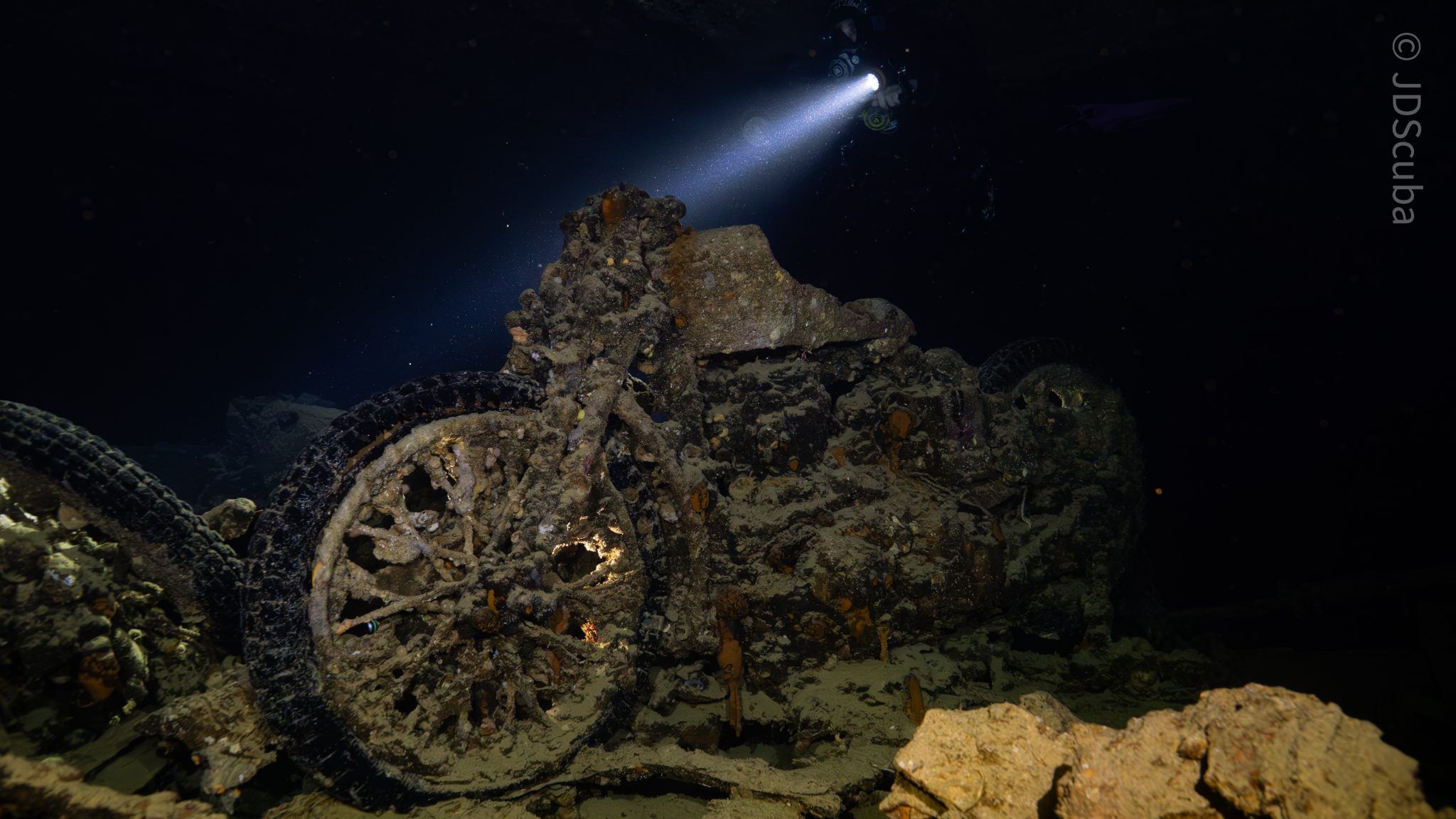
Jake Davies boards Ghazala Explorer for an unforgettable Red Sea diving experience…
Overnight, the wind picked up, making the planned morning dive a bit bumpy on the Zodiacs to the drop point on Thomas Reef. There, we would dive along the reef before descending through the canyon and then passing under the arch before ascending the wall with a gentle drift. The site provided great encounters with more pelagic species, including shoals of large barracuda, tuna, and bigeye trevally.
Once back on the boat, it was time to get everything tied down again as we would head back south. This time, with the wind behind us, heading to Ras Mohammed to dive Jackfish Alley for another great gentle drift wall dive before then heading up the coast towards the Gulf of Suez to moor up at the wreck of the Thistlegorm. This being the highlight wreck dive of the trip and for many onboard, including myself, it was the first time diving this iconic wreck. I had heard so much about the wreck from friends, and globally, this is a must on any diver’s list. Fortunately for us, there was only one other boat at the site, which was a rarity. A great briefing was delivered by Ahmed, who provided a detailed background about the wreck’s history along with all the required safety information as the currents and visibility at the site can be variable.
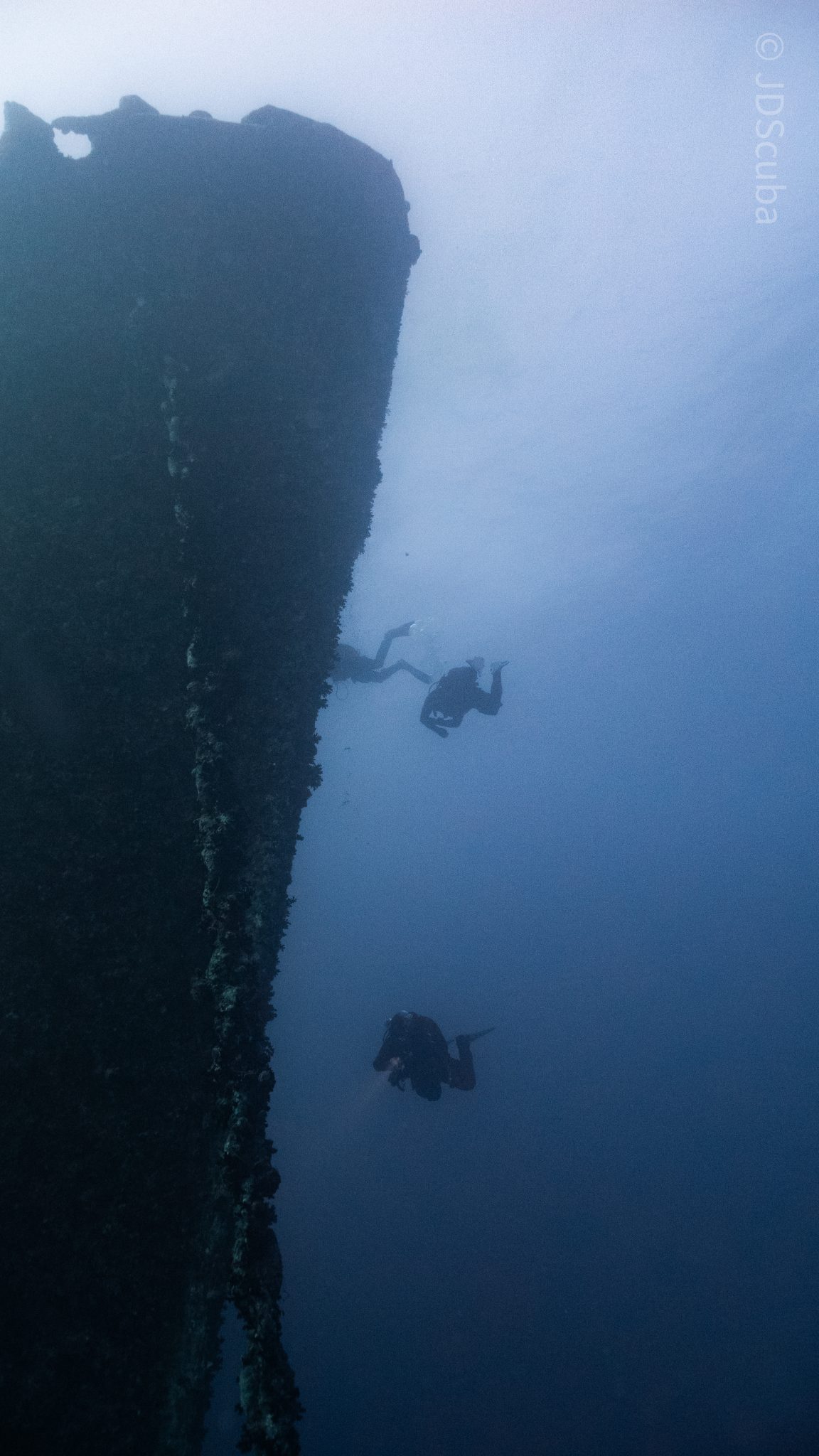
Kitting up, there was a lot of excitement on deck before entering the water and heading down the shoreline. Descending to the wreck, there was a light northerly current which reduced the visibility, making it feel more like the conditions that can be found off the Welsh coast. At 10m from the bottom, the outline of the wreck appeared as we reached the area of the wreck which had been bombed, as our mooring line was attached to part of the propeller shaft. Arriving on deck, instantly everywhere you looked there were many of the supplies which the ship was carrying, including Bren Carrier tanks and projectiles that instantly stood out.
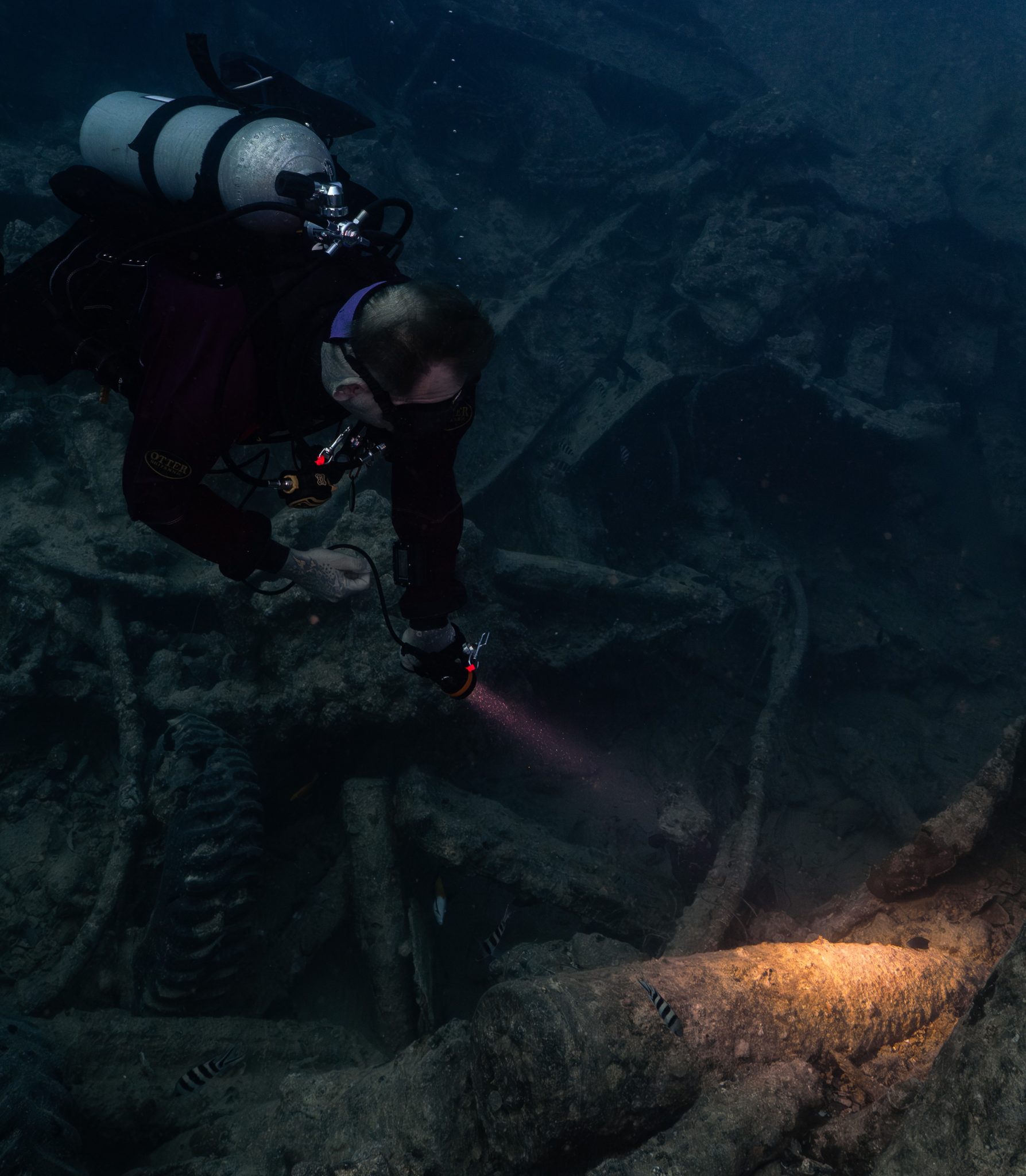
We headed around the exterior, taking a look at the large propeller and guns mounted on deck before entering the wreck on the port side to take a look in the holds. It was incredible to see all the trucks, Norton 16H, and BSA motorcycles still perfectly stacked within, providing a real snapshot in time.
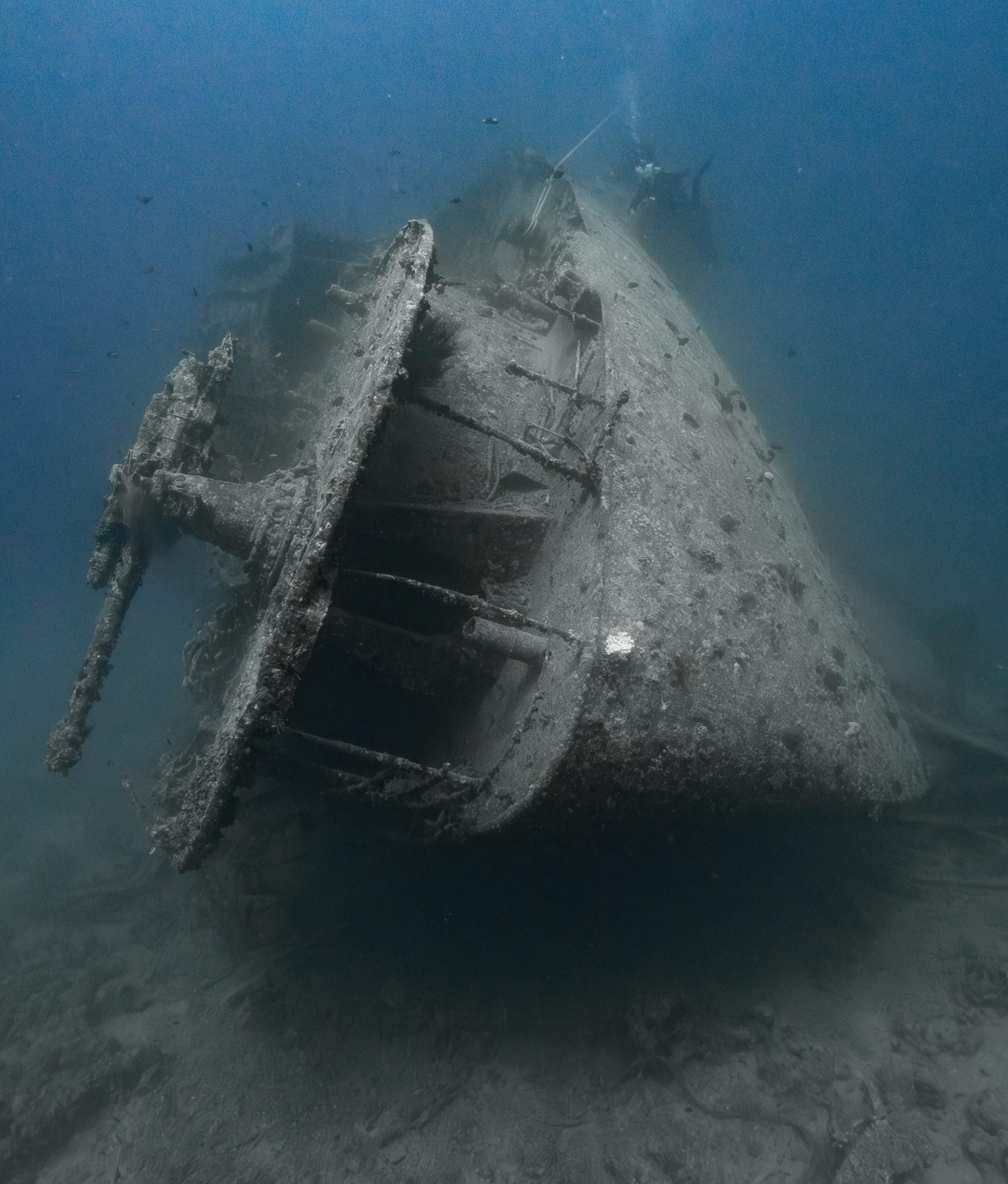
Overall, we had four dives on the Thistlegorm, where for all of the dives we were the only group in the water, and at times, there were just three of us on the whole wreck, which made it even more special, especially knowing that most days the wreck has hundreds of divers. Along with the history of the wreck, there was plenty of marine life on the wreck and around, from big green turtles to batfish, along with shoals of mackerel being hunted by trevally. Some unforgettable dives.
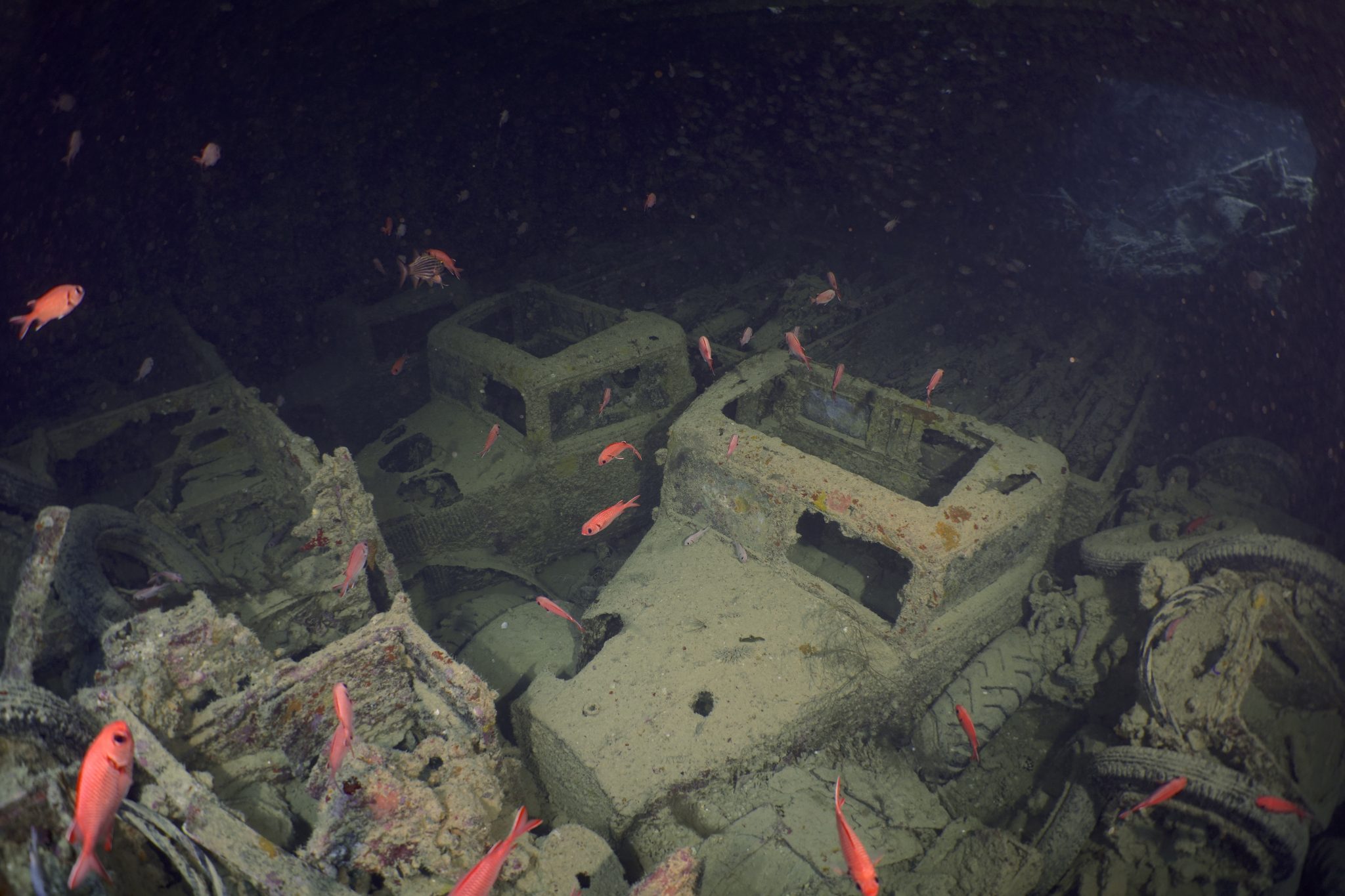
The final leg of the trip saw us cross back over the Suez Canal to the Gobal Islands where we planned to stay the night and do three dives at the Dolphin House for the potential of sharing the dive with dolphins. The site, which included a channel that was teeming with reef fish, especially large numbers of goatfish that swam in large shoals along the edge of the reef. These were nice relaxing dives to end the week. Unfortunately, the dolphins didn’t show up, which was okay as like all marine life they are difficult to predict and you can’t guarantee what’s going to be seen. With the last dive complete, we headed back to port for the final night where it was time to clean all the kit and pack before the departure flight the next day.
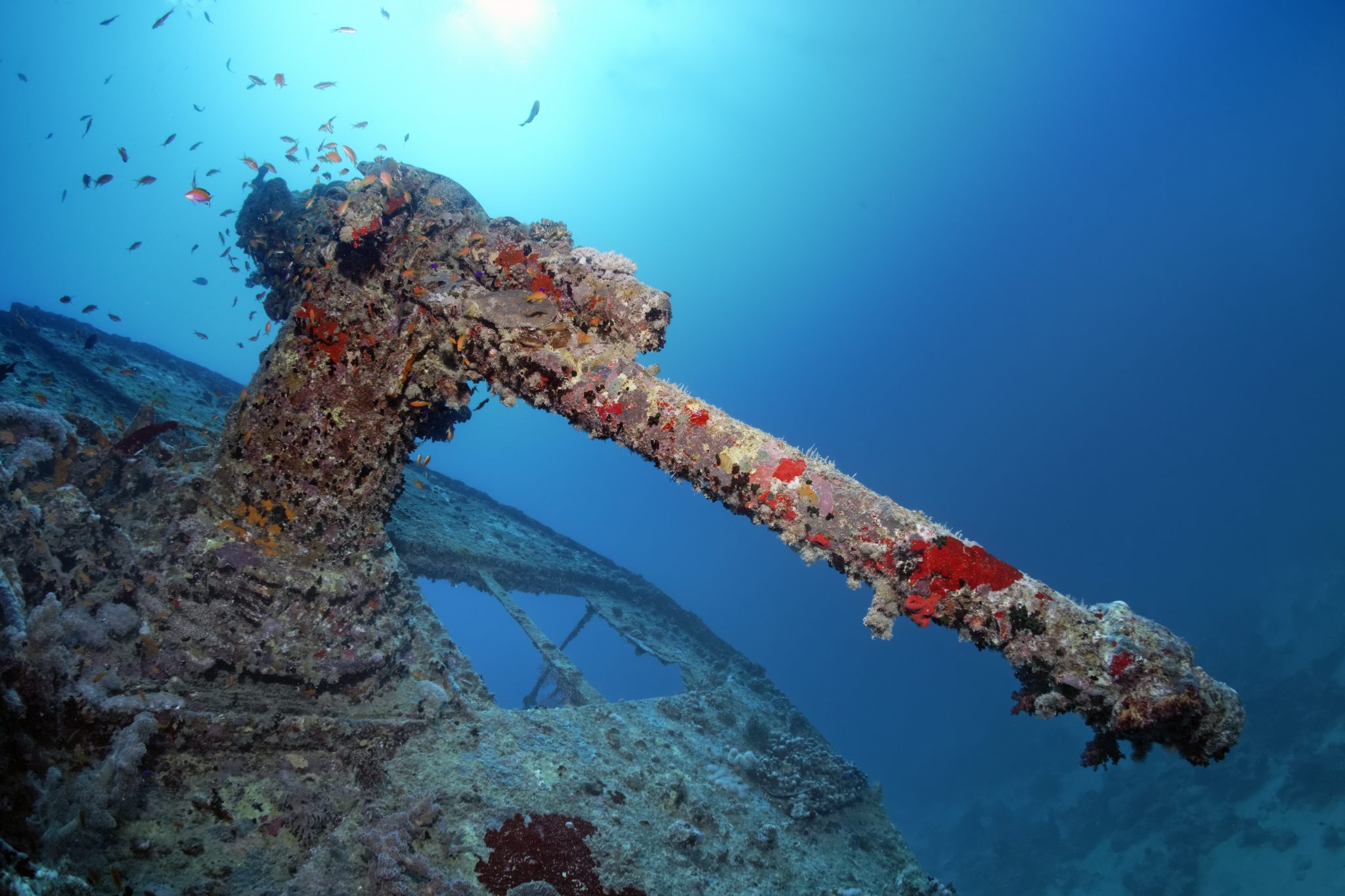
The whole week from start to finish on Ghazala Explorer was amazing; the boat had all the facilities you need for a comfortable week aboard. The crew were always there to help throughout the day and the chefs providing top quality food which was required after every dive. The itinerary providing some of the best diving with a nice mixture of wreck and reef dives. I would recommend the trip to anyone, whether it’s your first Red Sea liveaboard in the Red Sea or you’re revisiting. Hopefully, it’s not too long before I head back to explore more of the Red Sea onboard Ghazala Explorer.
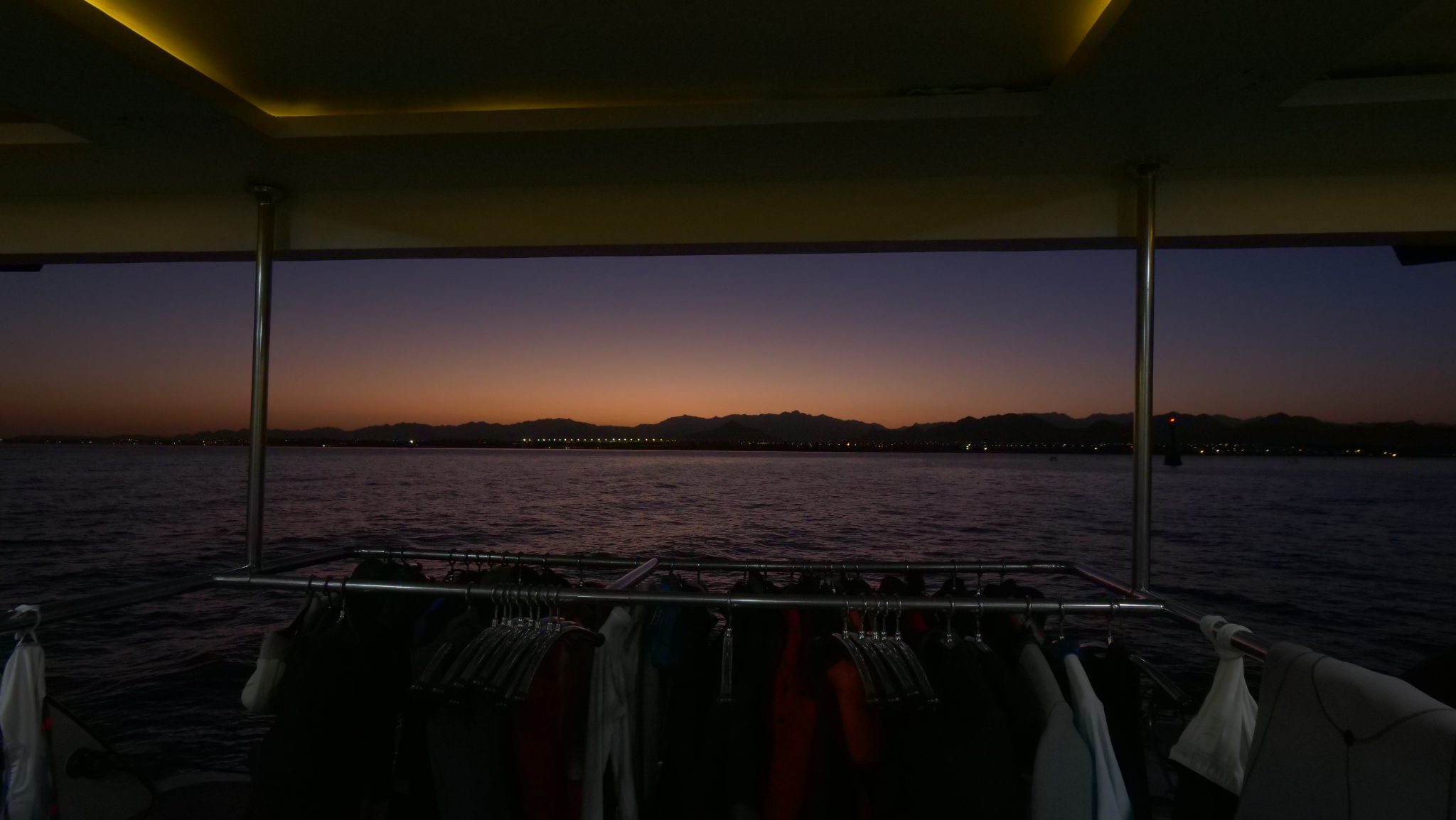
To find out more about the Northern Red Sea reef and wrecks itineraries aboard Ghazala Explorer, or to book, contact Scuba Travel now:
Email: dive@scubatravel.com
Tel: +44 (0)1483 411590
Photos: Jake Davies / Avalon.Red
Blogs
Northern Red Sea Reefs and Wrecks Trip Report, Part 2: Wall to Wall Wrecks
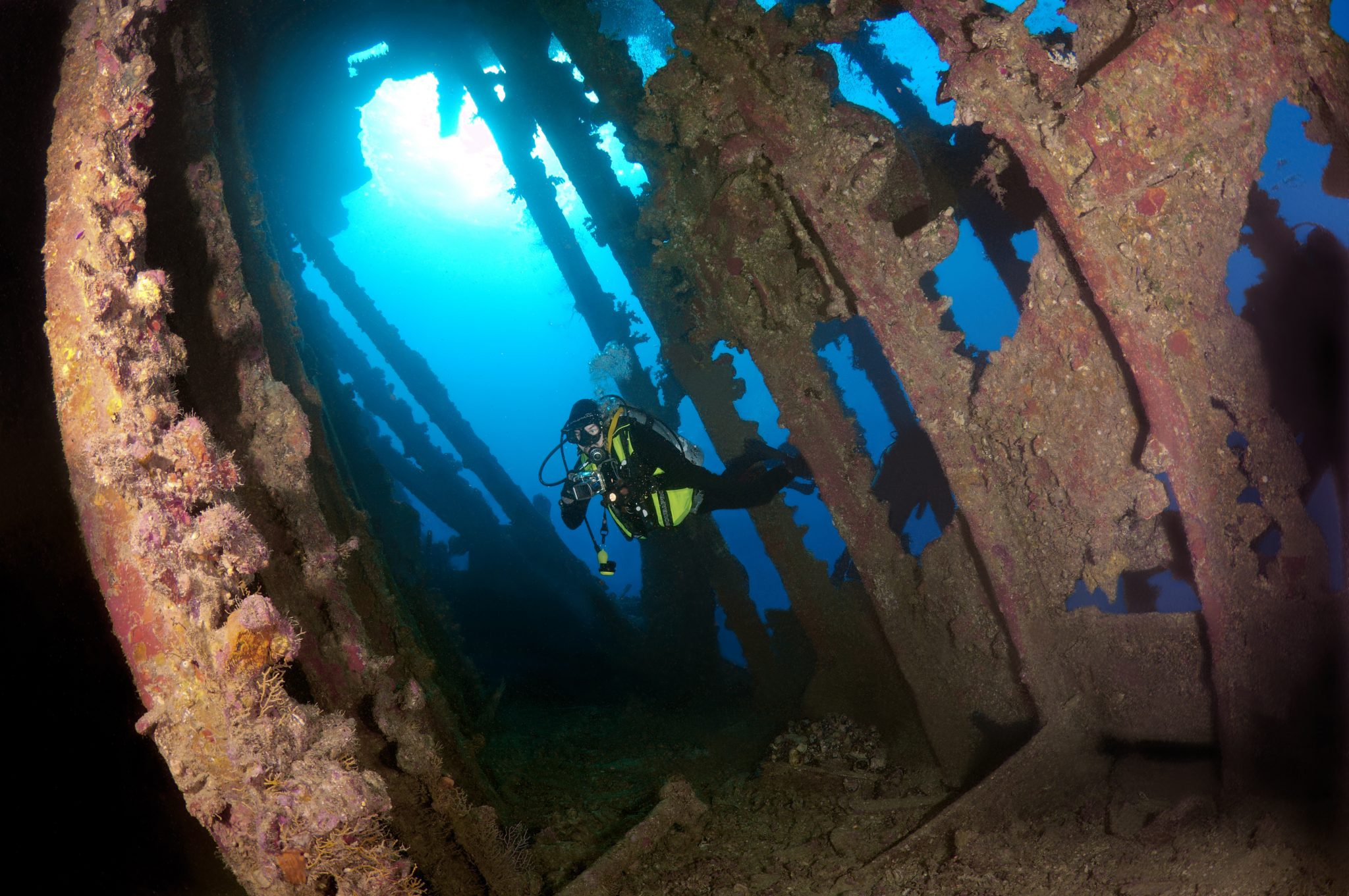
Jake Davies boards Ghazala Explorer for an unforgettable Red Sea diving experience…
The second day’s diving was a day full of wreck diving at Abu Nuhas, which included the Chrisoula K, Carnatic, and Ghiannis D. The first dive of the day was onto the Chrisoula K, also known as the wreck of tiles. The 98m vessel remains largely intact where she was loaded with tiles which can be seen throughout the hold. The stern sits at 26m and the bow just below the surface. One of the highlights of the wreck is heading inside and seeing the workroom where the machinery used for cutting the tiles are perfectly intact. The bow provided some relaxing scenery as the bright sunlight highlighted the colours of the soft coral reef and the many reef fish.
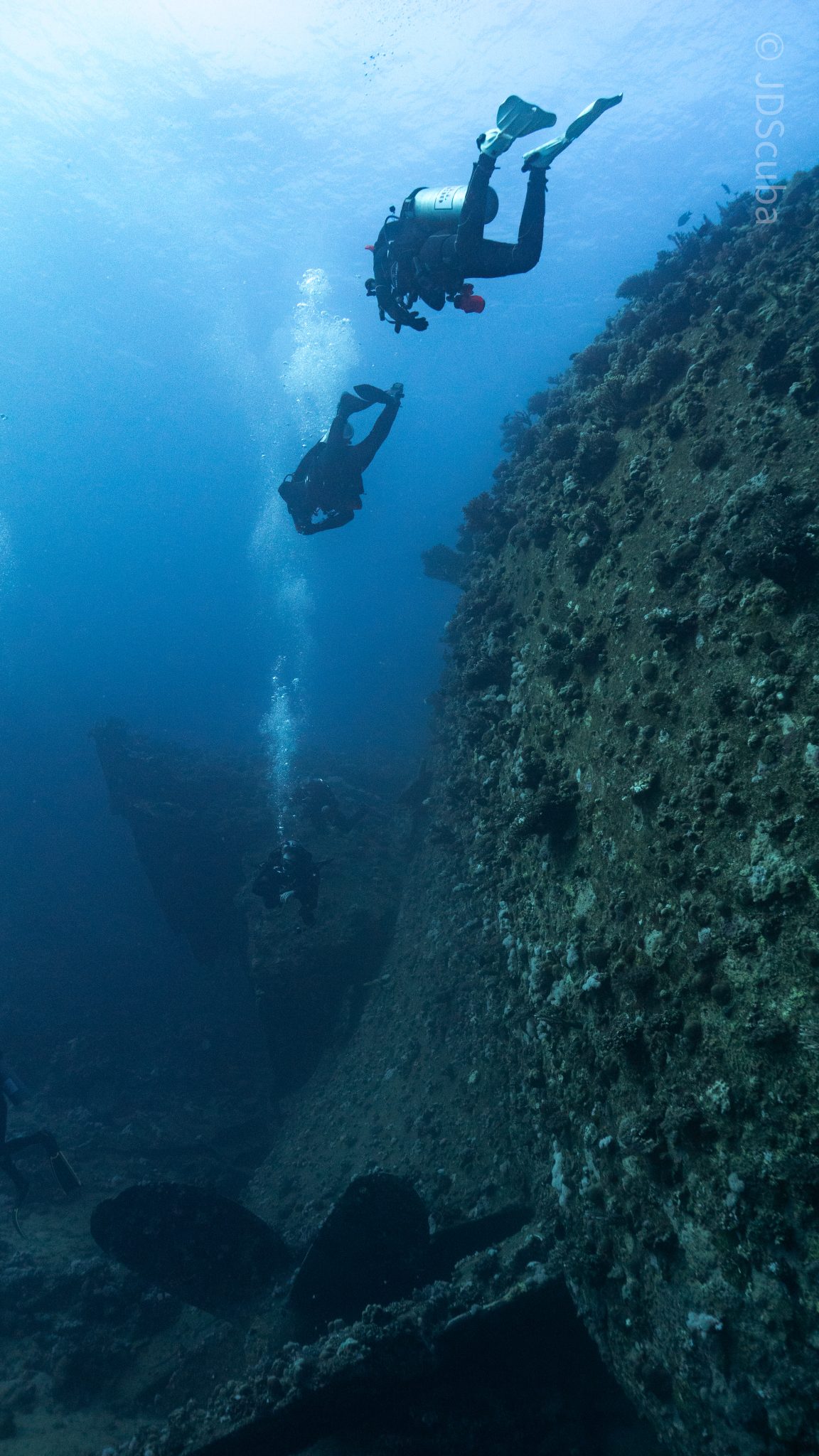
Following breakfast, we then headed to the next wreck, which was the Carnatic. The Carnatic is an 89.9m sail steamer vessel that was built in Britain back in 1862. She ran aground on the reef back in 1869 and remains at 27m. At the time, she was carrying a range of items, including 40,000 sterling in gold. An impressive wreck where much of the superstructure remains, and the two large masts lay on the seafloor. The wooden ribs of the hull provide structures for lots of soft corals, and into the stern section, the light beams through, bouncing off the large shoals of glass fish that can be found using the structure as shelter from the larger predators that are found outside of the wreck.
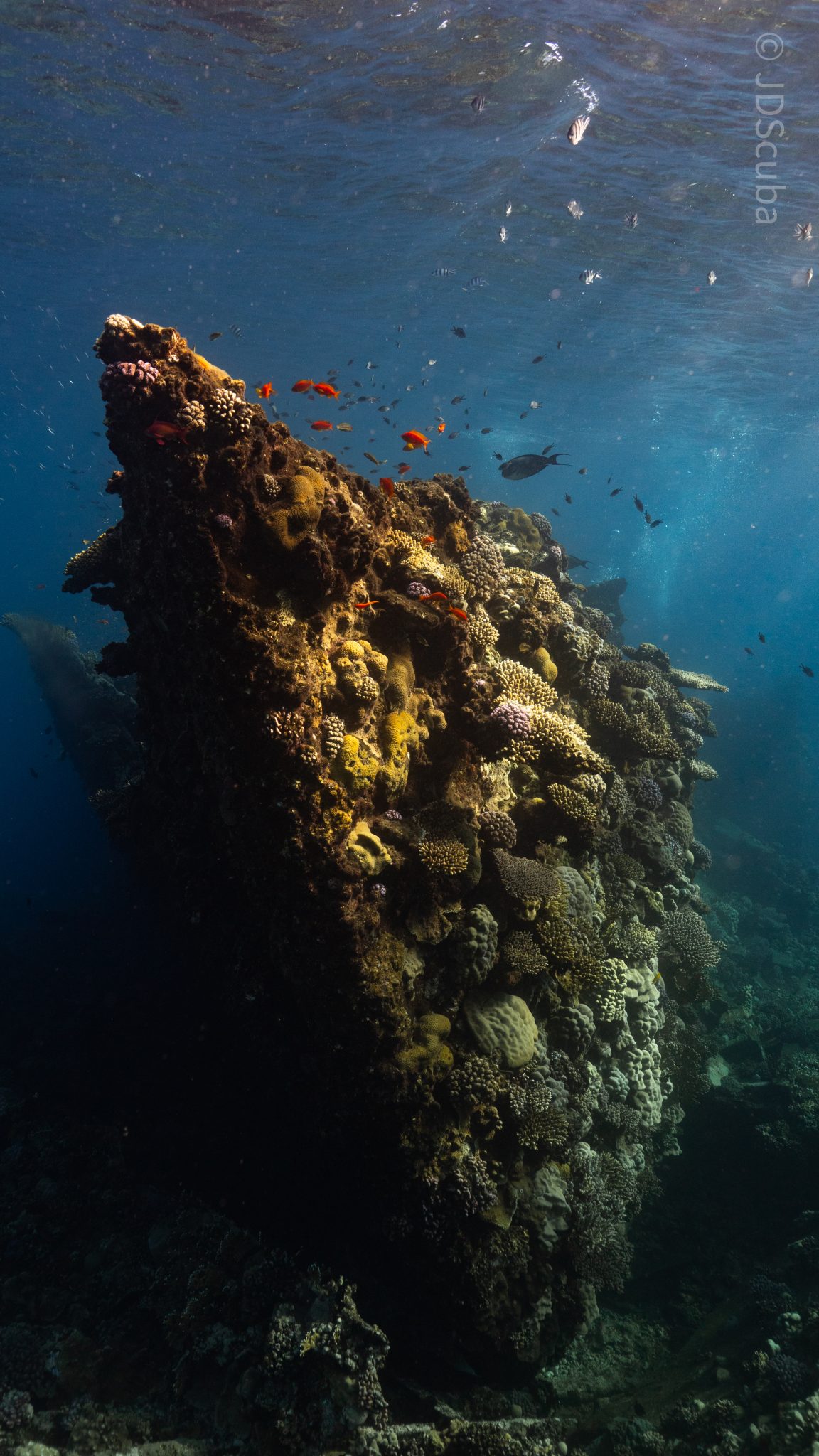
The final wreck at Abu Nuhas was the Ghiannis D, originally called ‘Shoyo Maru,’ which was 99.5m long and built in Japan back in 1969 before becoming a Greek-registered cargo ship in 1980. The ship then ran aground on the reef on April 19th, 1983, and now sits at the bottom at a depth of 27m. Heading down the line, the stern of the ship remains in good condition compared to the rest of the hull. The highlight of the wreck, though, is heading into the stern section and down the flights of stairs to enter the engine room, which remains in good condition and is definitely worth exploring. After exploring the interior section of the ship, we then headed over to see the rest of the superstructure, where it’s particularly interesting to see the large table corals that have grown at the bow relatively quickly considering the date the ship sank. After surfacing and enjoying some afternoon snacks, we made sure everything was strapped down and secured as we would be heading north and crossing the Gulf of Suez, where the winds were still creating plenty of chop.
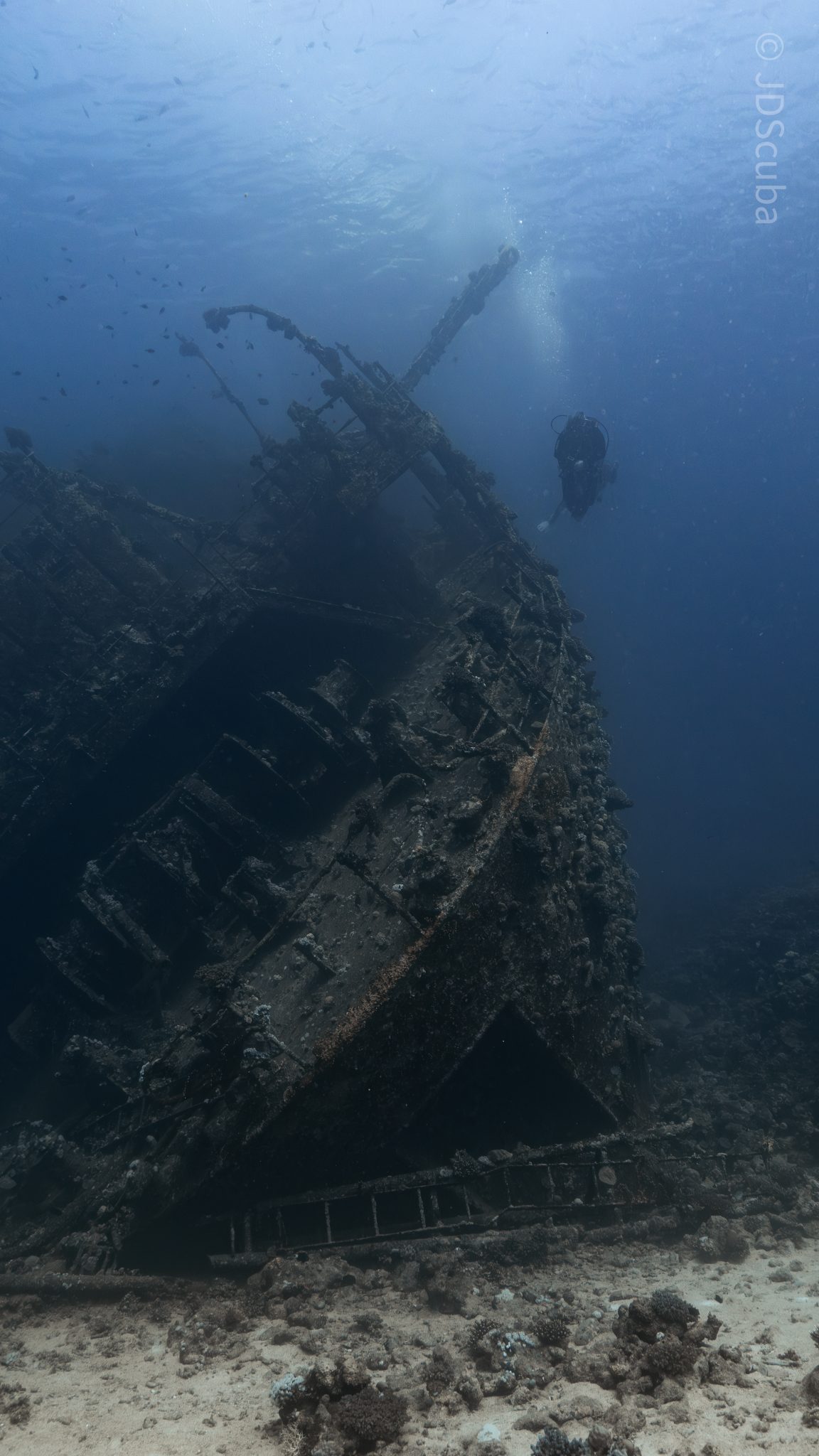
The next morning, it was a short hop to Ras Mohammed Nature Reserve for the next couple of days of diving. The 6am wake-up call came along with the briefing for the first site we would be diving, which was Shark & Yolanda. The low current conditions allowed us to start the dive at Anemone City, where we would drift along the steep, coral-filled wall. These dives involved drifts, as mooring in Ras Mohammed wasn’t allowed to protect the reefs. As a dive site, Shark & Yolanda is well-known and historically had a lot of sharks, but unfortunately not so many in recent years, especially not so early in the season. However, there was always a chance when looking out into the blue.
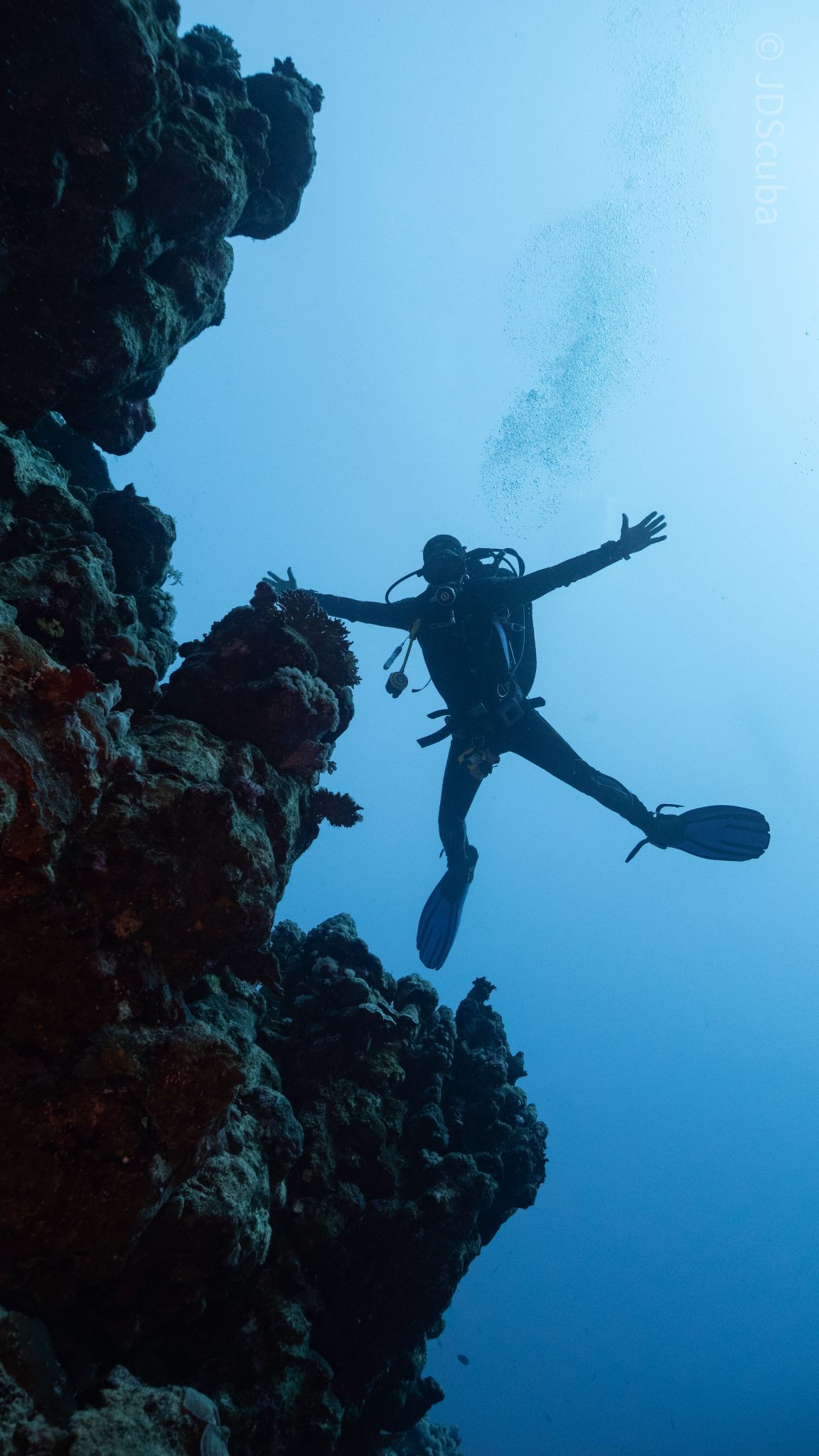
The gentle drift took us along the steep walls of the site, with plenty of anemone fish to be seen and a huge variety of corals. It wasn’t long into the dive before we were accompanied by a hawksbill turtle, who drifted with us between the two atolls before parting ways. Between the two reefs, the shallow patch with parts of coral heads surrounded by sand provided the chance to see a few blue-spotted stingrays that were mainly resting underneath the corals and are always a pleasure to see. With this being the morning dive, the early sunlight lit up the walls, providing tranquil moments. Looking out into the blue, there was very little to be seen, but a small shoal of batfish shimmering underneath the sunlight was a moment to capture as we watched them swim by as they watched us.
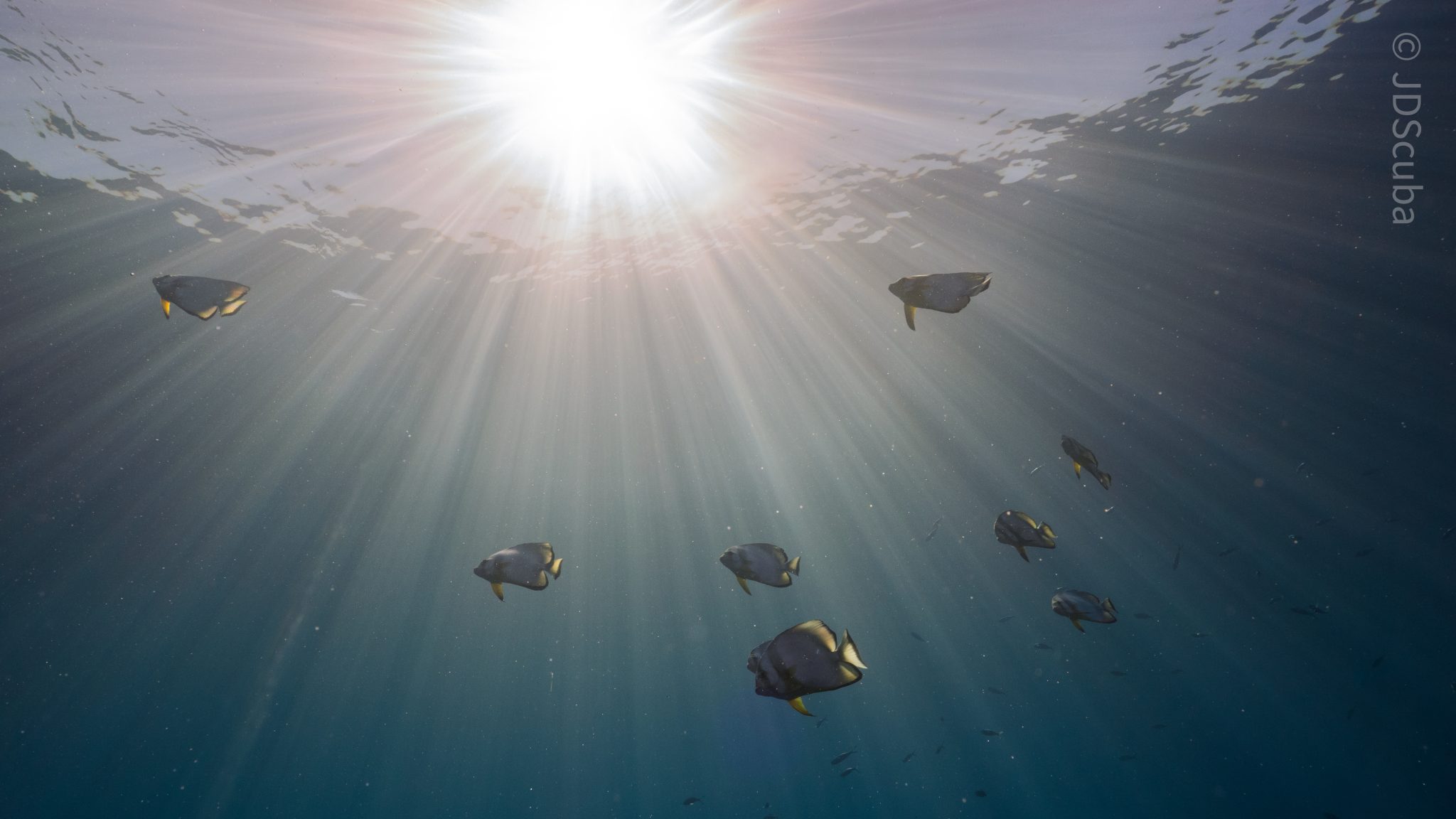
Towards the end of the dive, we stopped at the wreck of the Jolanda where the seafloor was scattered with toilets from the containers it was carrying. This provided a unique site to make a safety stop, which was also accompanied by a large barracuda slowly swimming by, along with a hawksbill turtle calmly swimming over the reef as the sun rays danced in the distance.
For the next dive, we headed north to the Strait of Tiran to explore the reefs situated between Tiran Island and Sharm El Sheik, which were named after the British divers who had found them. We started on Jackson before heading to Gordons Reef, where we also did the night dive. All the atolls at these sites provided stunning, bustling coral reefs close to the surface and steep walls to swim along, which always provided the opportunity to keep an eye out for some of the larger species that can be seen in the blue. Midwater around Jackson Reef was filled with red-toothed triggerfish and shoals of banner fish, which at times were so dense that you couldn’t see into the blue. Moments went by peacefully as we enjoyed the slow drift above the reef, watching these shoals swim around under the mid-afternoon sun.
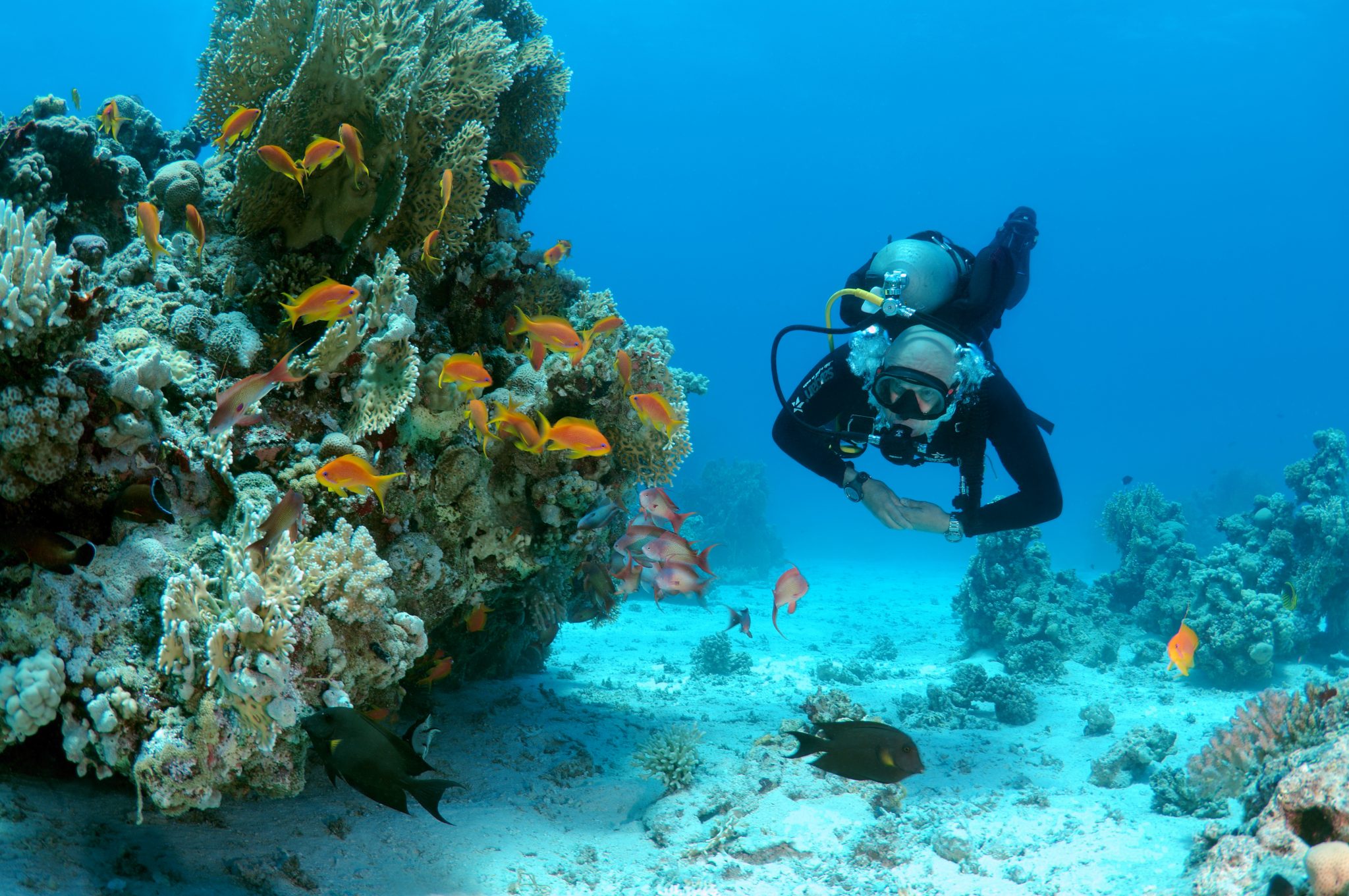
The night dive at Gordon’s Reef was mainly among the stacks of corals surrounded by sand, which was great to explore under the darkness. After some time circling the corals, we came across what we were really hoping to find, and that was an octopus hunting on the reef. We spent the majority of the dive just watching it crawl among the reef, blending into its changing surroundings through changes in colour and skin texture. It’s always so fascinating and captivating to watch these incredibly intelligent animals, in awe of their ability to carry out these physical changes to perfectly blend into the reef. Before we knew it, it was time to head back to the boat to enjoy a well-deserved tasty dinner prepared by the talented chefs onboard.
Check in for the 3rd and final part of this series from Jake tomorrow!
To find out more about the Northern Red Sea reef and wrecks itineraries aboard Ghazala Explorer, or to book, contact Scuba Travel now:
Email: dive@scubatravel.com
Tel: +44 (0)1483 411590
Photos: Jake Davies / Avalon.Red
-
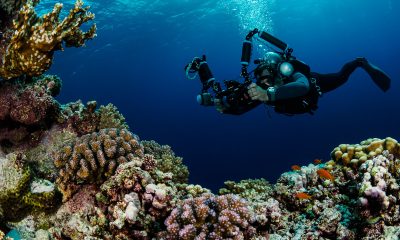
 News3 months ago
News3 months agoHone your underwater photography skills with Alphamarine Photography at Red Sea Diving Safari in March
-
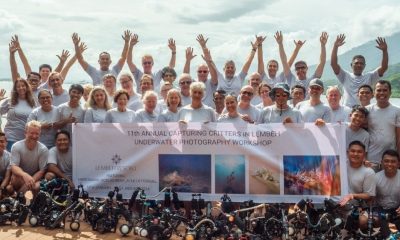
 News3 months ago
News3 months agoCapturing Critters in Lembeh Underwater Photography Workshop 2024: Event Roundup
-
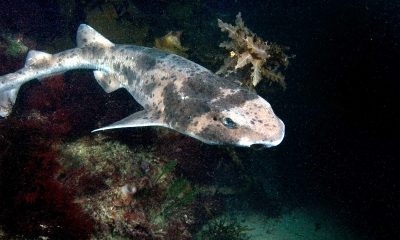
 Marine Life & Conservation Blogs3 months ago
Marine Life & Conservation Blogs3 months agoCreature Feature: Swell Sharks
-
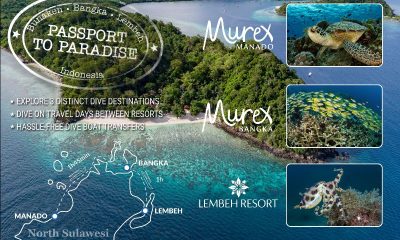
 Blogs2 months ago
Blogs2 months agoMurex Resorts: Passport to Paradise!
-
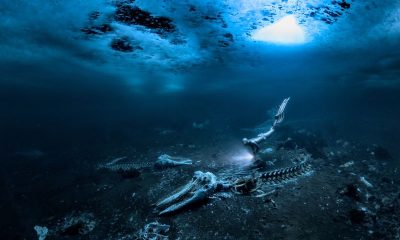
 Blogs2 months ago
Blogs2 months agoDiver Discovering Whale Skeletons Beneath Ice Judged World’s Best Underwater Photograph
-
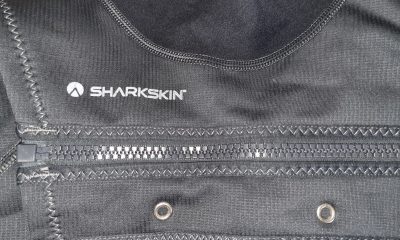
 Gear Reviews2 weeks ago
Gear Reviews2 weeks agoGEAR REVIEW – Revolutionising Diving Comfort: The Sharkskin T2 Chillproof Suit
-
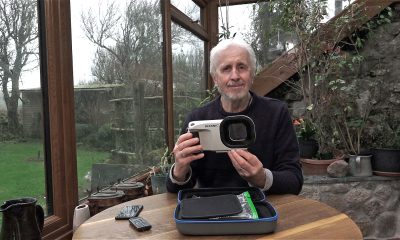
 Gear Reviews3 months ago
Gear Reviews3 months agoGear Review: Oceanic+ Dive Housing for iPhone
-
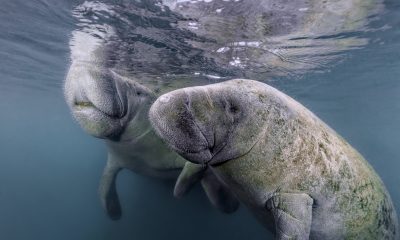
 Marine Life & Conservation2 months ago
Marine Life & Conservation2 months agoSave the Manatee Club launches brand new webcams at Silver Springs State Park, Florida


